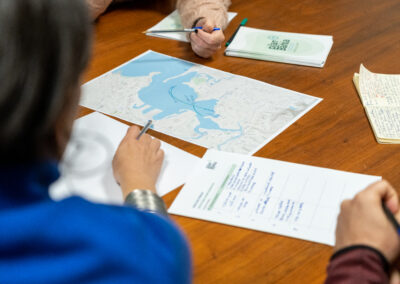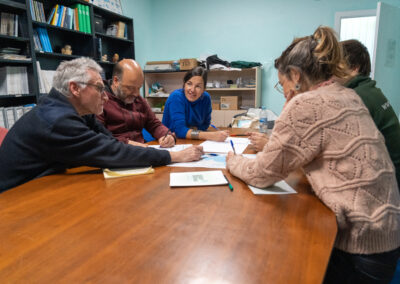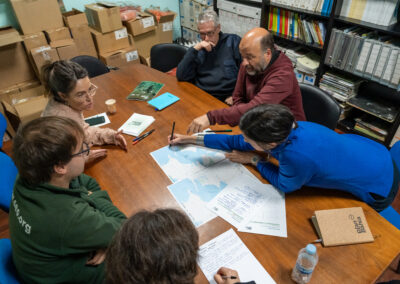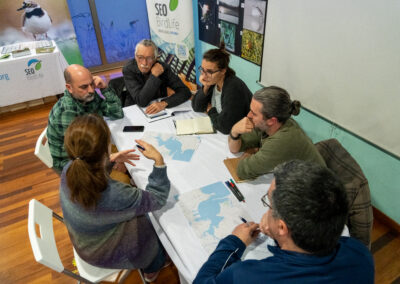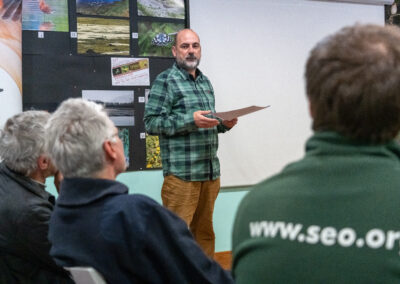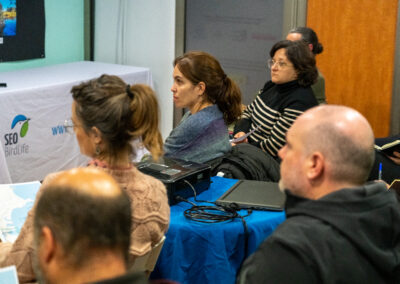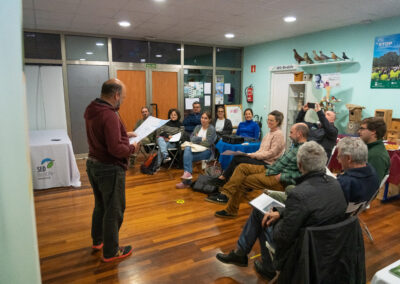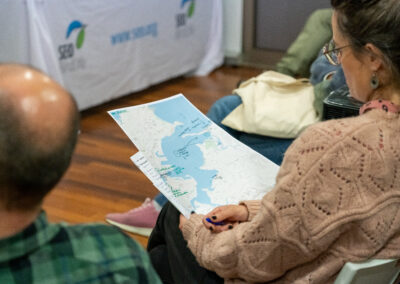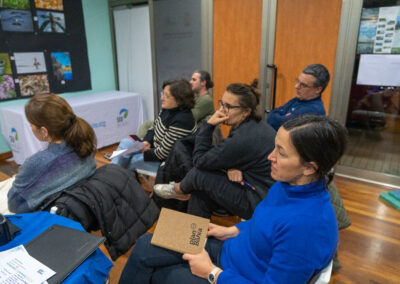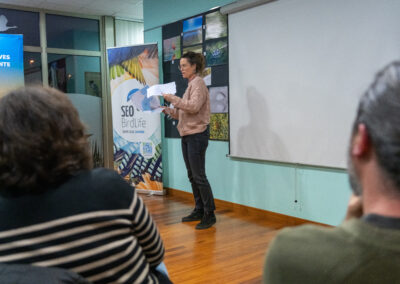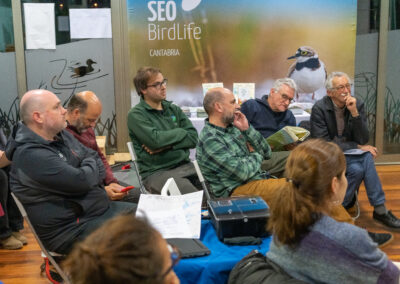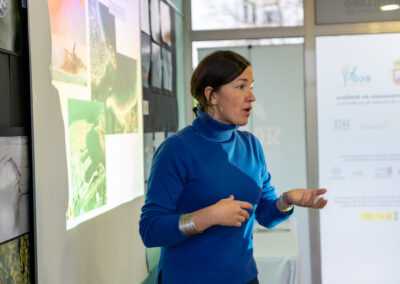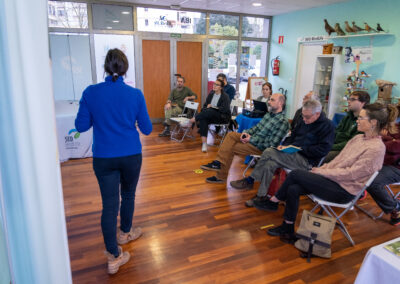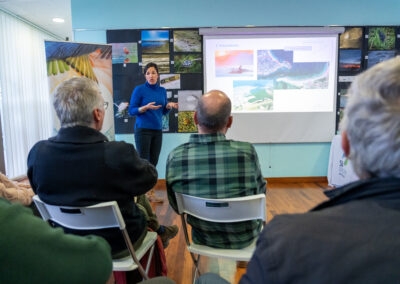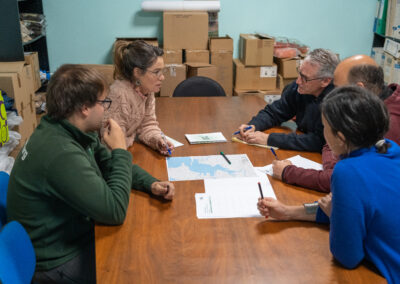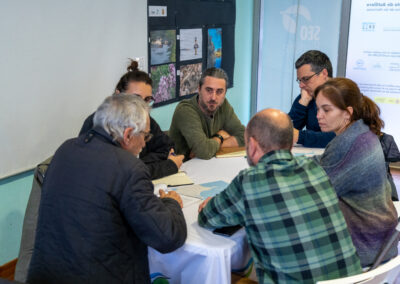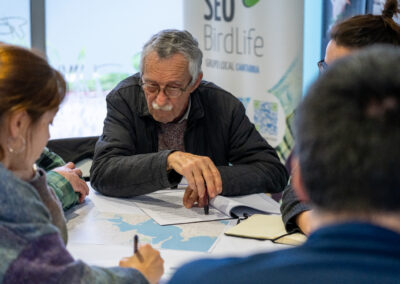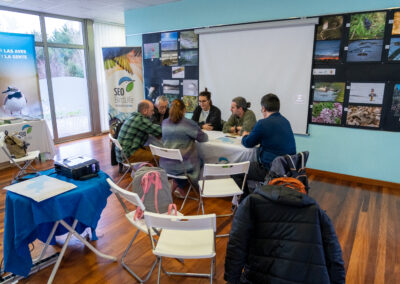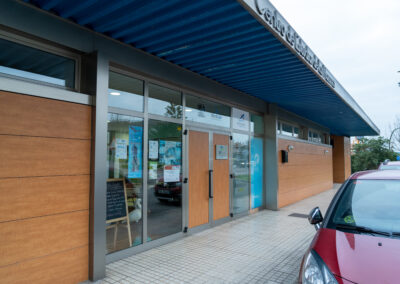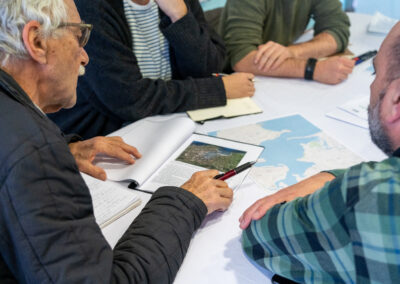Plan Bahía evaluates with representatives of environmental organizations the challenges for the estuary’s conservation
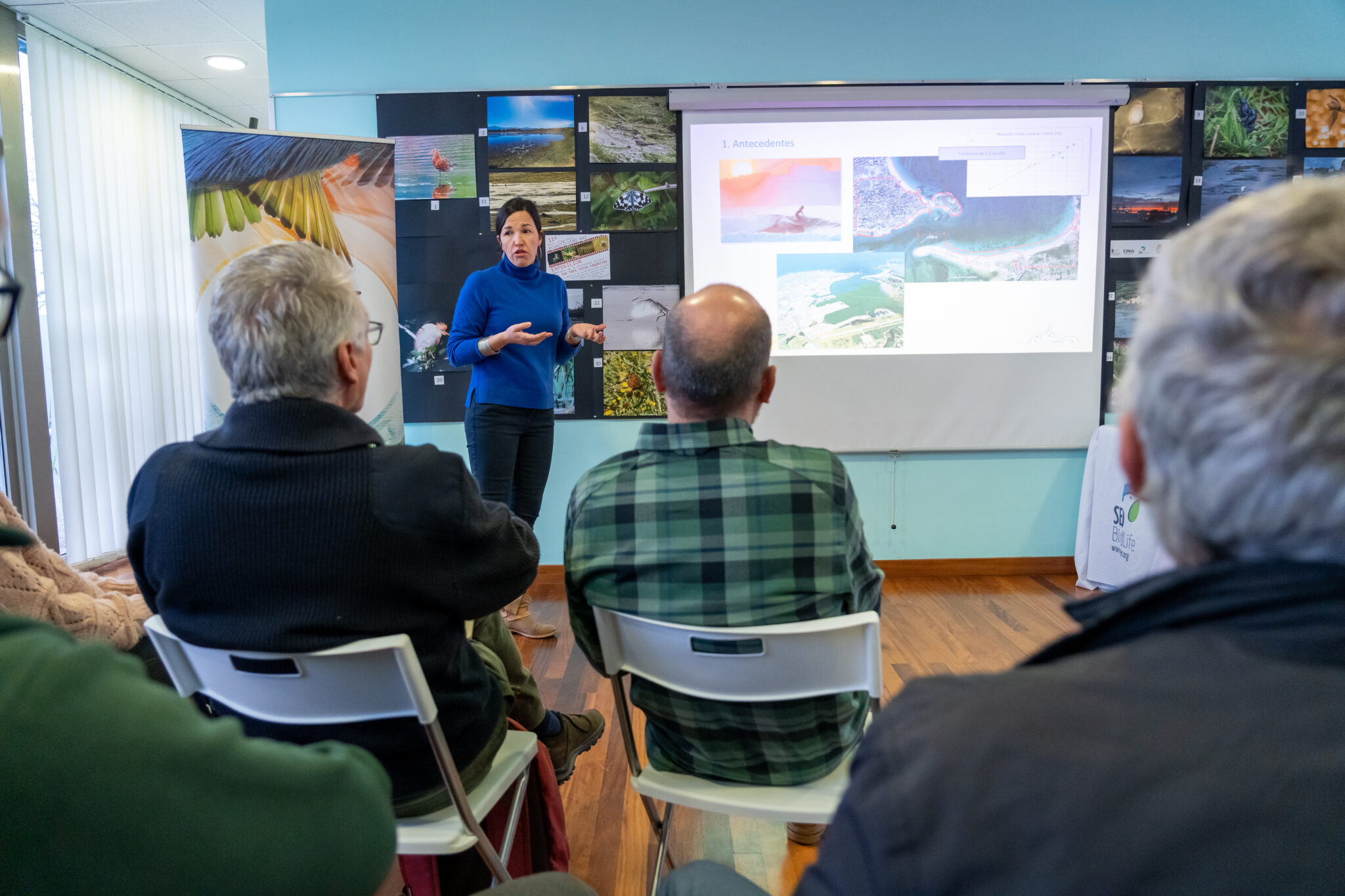
Restoring degraded habitats, implementing measures to manage pollution or developing strategies to control and eradicate invasive species are some of the solutions to guarantee the health and sustainability of the natural resources of Santander Bay.
The Bay Plan has analyzed the key issues surrounding conservation in the Bay of Santander and the challenges associated with the protection of its natural wealth and long-term sustainability. Representatives of different groups involved in the environmental protection of Cantabria have participated in a working group in which the main problems have been identified and various measures have been proposed to ensure the preservation of this important ecosystem.
One of the main challenges is to protect the habitats and species that inhabit the estuary and that are facing urban growth, pollution and the effects of climate change, factors that cause their degradation and put the survival of local species at risk.
In addition, the effects of climate change associated with rising sea levels and altered weather patterns are affecting biodiversity and ecosystem stability. Water quality and dynamics to ensure the health of marine ecosystems and human activities or the control of invasive species, whose presence alters ecological balances and negatively affects diversity, represent other major challenges.
During the working session, several solutions were proposed, such as restoration of degraded natural habitats -such as the Conde marsh, in the Cubas estuary, the implementation of pollution management o the development of strategies for the control and eradication of invasive species (chilca, plumero, Oenothera, Carpobrotus… ) as well as to promote sustainable gardening and urban planning practices to prevent its propagation.
Unique conservation features
During the working session, participants identified and evaluated the unique and critical natural elements for conservation in the Bay of Santander and pointed out the threat factors associated with each of them.
The habitats of the Special Area of Conservation (SAC) Dunas del Puntal and Miera Estuary, together with Mount Arna, are essential for biodiversity. and face various challenges, such as rising sea levels or erosion (which has led to a significant loss of sand volume in the Somo-Loredo system) or urbanization and mass tourism in summer (which generate pressure on these areas).
The intertidal moors, especially the area between Pedreña and Pedrosa, are areas of high ecological value, fundamental for the shellfish resource and the feeding of waders.
The coastal lagoons of Alday, Marismas Blancas and Negras, Engoa and Pozonas de San Román are key for the conservation of habitats and birdlife and are affected by landfills and invasive species. The conservation of the islands of the Bay is of special interest : Ratones, Hierba, La Campanuca, La Torre, Mouro and Santa Marina, which have invasive species and soils sealed by old constructions.
As for the quality and dynamics of the water in the Bay, it is compromised by diffuse discharges and landfills that alter its hydrodynamics. The participants also highlighted the importance of the poor sediment quality of the inland estuaries and the Raos area.
Flood zones, characterized by old concessions often in disuse, reflect a significant challenge in the conservation of Santander Bay. In this context, urban consolidation and soil impermeabilization threaten its ecological integrity and favor the appearance of other associated problems, such as pluvial flooding.
As for the biodiversity of the Bay, there are unique areas such as the relict dune system of Bikinis beach and the rocky intertidal of La Magdalena at risk due to urban development and the presence of invasive species.
Seagrass meadows (aquatic plants that produce flowers and seeds) and salt marsh communities, especially those that host species such as Salicornia or Halimione, are vital elements for biodiversity, although the latter are scarce in the estuary due to the filling of intertidal surfaces. The attendees emphasized the pressures affecting the environment of the mouth of the Cubas estuary, where the increased use of jet skis, the presence of invasive species and berthing projects threaten the integrity of these coastal ecosystems.
The inland estuaries of El Carmen, Tijero and Solía. are also key elements for conservation and present challenges, as well as the La Maruca and Costa QuebradaThe participants highlighted the problems related to the operation of the San Román sewage treatment plant, which causes various disturbances in the environment.
Restoration and conservation actions
One of the main measures proposed is the recovery of old concessions in the Bay. These are spaces that are sometimes disused, filled or closed with dikes, which affects the hydrodynamics of the system and the quality of the water. Their restoration can contribute to the improvement of the marine environment and the conservation of coastal ecosystems. The participants have identified the Marisma del Conde and the old quarry located in the center of Pontejos, in front of the island of La Campanuca, as priority areas for this purpose.
In addition, it is proposed to define criteria and standards for environmental restoration in the coastal environment to avoid possible conflicts arising from the recovery of landfills in the coastal zone.
Other actions include
to regulate the use of recreational boats, especially jet skis, to regulate the use and human passage in the dune system of Somo
The use of recreational boats, especially jet skis, regulating the use and human passage in the dune system of Somo by maintaining the wooden walkways, and controlling vehicle access and overnight stays in coastal areas.
The restoration of the islands – important habitats for local fauna and flora – is another priority measure to conserve the landscape and ecological value of the Bay.
Solutions for integrated management
The conclusions reached at the Conservation Working Table, together with those obtained at the other meetings will be an important essential component for the preparation of the Integrated Diagnosis of the Bay of Santander. This assessment, which will also include in-depth technical analyses, will be the cornerstone for developing the proposal of solutions that address the challenges identified in the conservation and sustainable management of the estuary.
Plan Bahía’ is a research project coordinated by the Institute of Environmental Hydraulics of the University of Cantabria(IHCantabria) and funded by the Ministry of Science and Innovation and the Government of Cantabria, through the Marine Sciences Program. Its objective is to draw up the Integrated Management Plan for the Bay of Santander, which will establish the collaboration mechanisms and the measures to be implemented so that the institutions that make up the Bay Committee can address the future actions to be developed within the framework of an Integrated Plan for the Management of the Bay.
This study is part of the
ThinkInAzul
program, financed by the Ministry of Science and Innovation with funds from the European Union NextGenerationEU (PRTR-C17.I1) and by the Autonomous Community of Cantabria.




